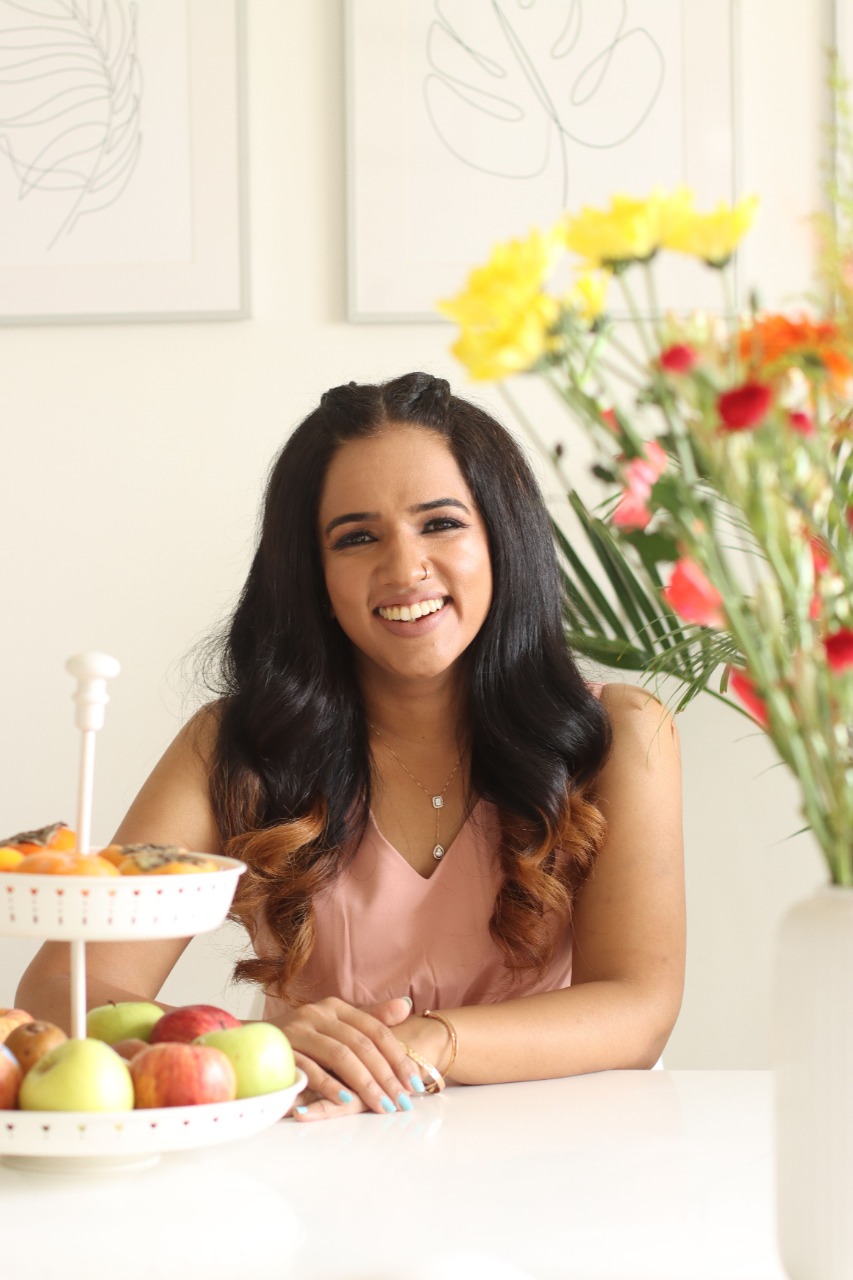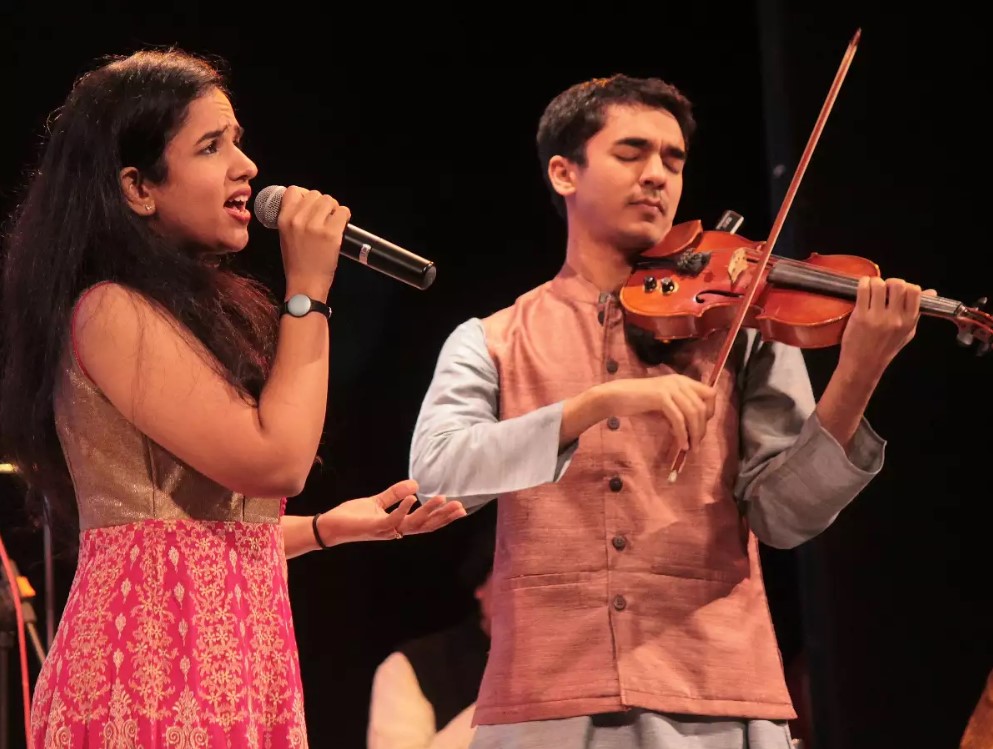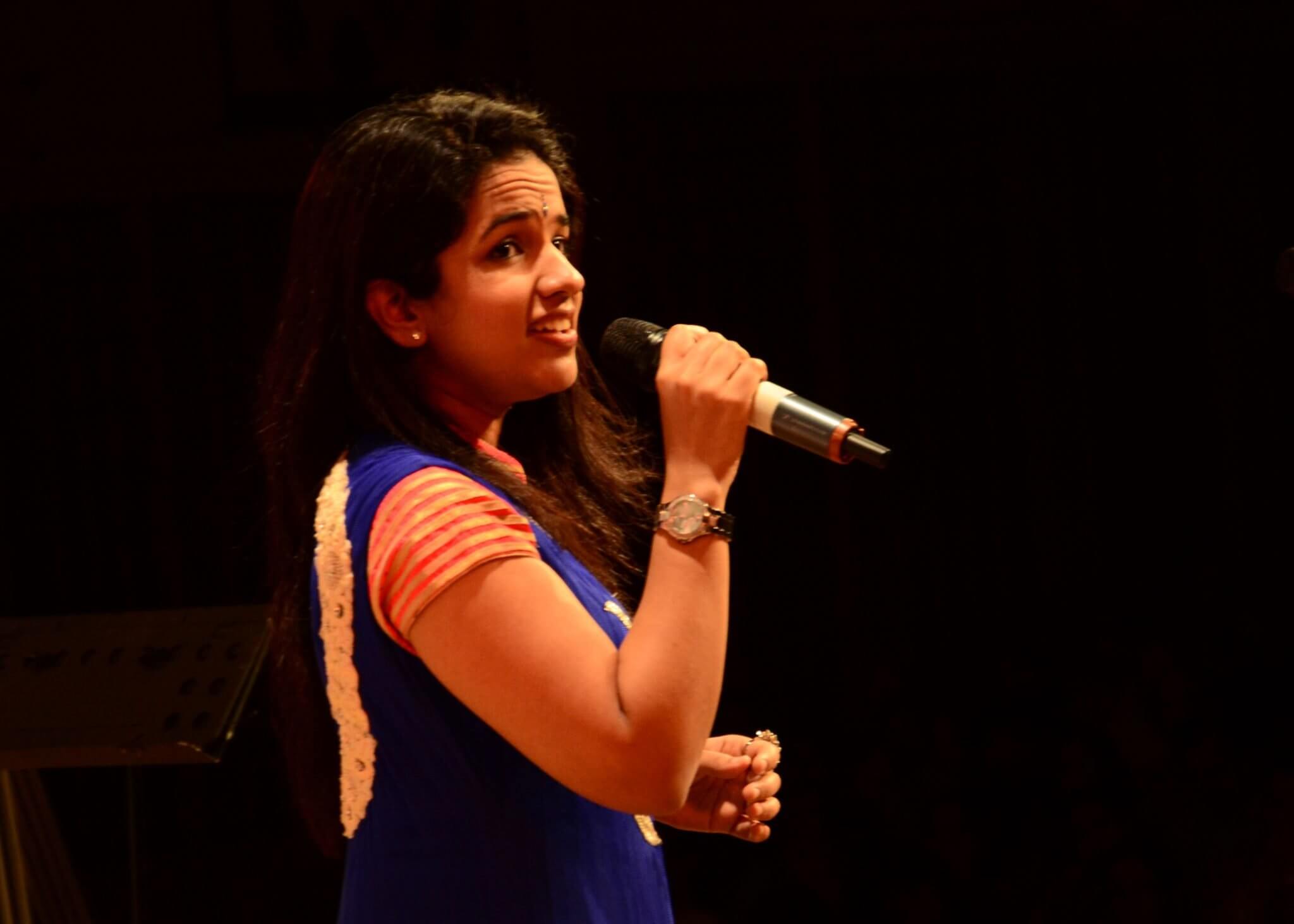(October 5, 2023) Bindu Subramaniam, CEO & Co founder, Subramaniam Academy of Performing Arts (SaPa) is continuing her family legacy of music by adding her own distinct touch. As an entrepreneur, singer, songwriter, and educator, Bindu Subramaniam is co-founder and CEO of SaPa and the lead vocalist of SubraMania. If that packs a punch read on to know more about this versatile artist.
Early life
Growing up in the USA, Bindu Subramaniam thought she would be a lawyer, doing corporate law like a character from a John Grisham novel. “I think I was halfway through law school when I realised that wasn’t what I wanted, and that music was a very important part of not just my personal life, but my career as well,” Bindu says, in an interview with Global Indian. She comes with a storied musical pedigree = as the daughter of violin maestro L. Subramaniam, music was all around her, always.

Bindu Subramaniam, CEO & Co founder, Subramaniam Academy of Performing Arts (SaPa).
And while there was never any pressure on her to be a musician, Bindu and her brother Ambi were expected to work hard at whatever they chose to do. “And yes, music was an important part of life, so I learned Indian and Western classical vocals, I learned violin, I learned piano. That was very central to my early life.” In fact, Bindu first went on stage at the age of 12, to perform a composition by her father, ‘Astral Symphony’, with the Oslo Philharmonic Orchestra and global soloists. So finding music again in her early twenties was, in a way, a homecoming. Since then, she has performed around the world, for audiences as large as 5,00,000, with her family, her bands and with orchestras.
While music came naturally to her, initially she saw it as something that brought her joy, as learning music, performing music, collaborating was always something that was exciting and just a regular part of her existence. “In fact, I always thought I’d be a lawyer, and I’d grow up and do corporate law and be like a character from a John Grisham novel. Halfway through law school, I realized that music was a very important part of not just my personal life, but my career as well. However, the people that I’ve been surrounded by, whether it’s my family or well-wishers or friends, have never made me feel any direct pressure to be a musician, but I’ve received a lot of love and support when that was the path I was choosing,” she says.
Making Music
What was it like being the daughter of Dr L. Subramaniam? “Normal,” Bindu smiles, “Because to a child, every experience is normal. Having this atmosphere of music was also very normal. There was this constant motivation to do your best and to work harder and give it your all,” Bindu says. “I was fortunate to perform with a Norwegian orchestra when I was 12 years old as a soloist, and to be on stage with 50 to 60 orchestra musicians and then a handful of other soloists from around the world was such a huge learning experience for me,” she recollects. And from then she has had the opportunity to perform with several other orchestras from different parts of the world, whether it was her father’s compositions or other compositions. “Every time you work with an orchestra, it’s so powerful to see how 50, 60, 70, or even 100 different people work together to create one unified sound,” she adds.
Sibling Revelry
She also works with her brother Ambi Subramaniam, through SubraMania, and also with Varun Murali, the guitarist and producer from Swarathma. Collaborating with Ambi is one of the most fun things according to her, as she works with him in many different capacities, whether it’s at SaPa or through the Thayir Sadam project or SubraMania. “I think we complement each other well because we have our own strengths and weaknesses. He is very organized; I am a little more impulsive. I write lyrics; he really shouldn’t, but jokes aside, I think we kind of understand each other because we have grown to a point where we are friends as adults, not just like siblings as kids,” Bindu says.

Their collaboration is about respecting each other’s space, and finding room to experiment with music that they enjoy across genres. “So we think of SubraMania as contemporary world music; it is sometimes Indian classical, sometimes it’s Western pop, sometimes it’s African, sometimes it has Latin-American influences,” Bindu explains. Electronica meets Carnatic and pop elements in the Thayir Sadam Project, another sibling collab with Mahesh Raghavan and Akshay Anantapadmanabhan. “I think I grew into my own as a singer-songwriter really by experimenting a lot and trying out different things,” Bindu remarks. Studying songwriting at Berkeley was a “revelatory experience” for the versatile musician, because she “got to see how some of the greatest songwriters work, how they break things down, structure them and how they understand the tolls that they have. That is really, I think, one thing that helped me transform my writing,” she explains.
Education Cues
Her family started SaPa with the intent to create a home for great music and great musicians, and to create the next generation of talent. “Since 2007, we have really tried to create an environment where everyone can find their own artistic voice and grow. When I had my own daughter, I really started looking more and more at making classical music, particularly, more accessible for babies. So, we started the SaPa Baby program in 2013, where we have been teaching classical music to children as young as three,” she says.
The idea has been that music has always been great, but it is the methodology that needs innovations. Hence, they have worked on trying to create a methodology that would make classical music very exciting for young children who had no family background in music whatsoever. From there, they began the SaPa in Schools program in 2014, to make music a meaningful part of every child’s life. “Whether you want to be a musician or not, music is something that can bring you joy, help you understand yourself better, help make you a global citizen, give you critical thinking, communication, team-building skills – all these things which I think are necessary for holistic development,” Bindu adds.

SaPa outreach is all about making high-quality music education accessible to everybody and to make sure that music can reach as many people as possible, irrespective of their background or their circumstances. Interestingly, this concept of music for everybody, now resonates with the new national education policy and all the frameworks that apply built around it. They have now developed the SiS Program curriculum to include Indian and global music.
Outreach
When the team first started working with government schools, the main challenge was to get the necessary permissions. After that, it came down to making their work relevant to their young audience. “Our music curriculum still created the same impact, but the textbooks needed to be translated,” Bindu says. That wasn’t all. They found themselves convincing parents who felt music was a distraction from math or science. “In these cases, we have been fortunate to have the schools’ support; the principal would counsel the parents and tell them why music is an important subject. And after a few counselling sessions, the parents see the benefits of what we are doing as well,” Bindu adds.
Future Fix
Bindu Subramaniam is a steering committee member of the Australia India Youth Dialogue, chairperson for the All-India Management Association’s Young Leaders Council, and President for the Stanford Seed Transformation Network South Asia that ensures she gets to meet exciting people and learn. She advises young people, whether they are musicians or anything else, to find what they are good at and find what gives them joy and keep working hard at it every day. “There is no set blueprint, there’s no right way to do it, and if you can create something that’s uniquely yourself, that’s the most powerful thing,” she says. Her future plans involve more new courses at SaPa as they are working on bringing out the sampler course and introducing thousands of children to different styles of music.




